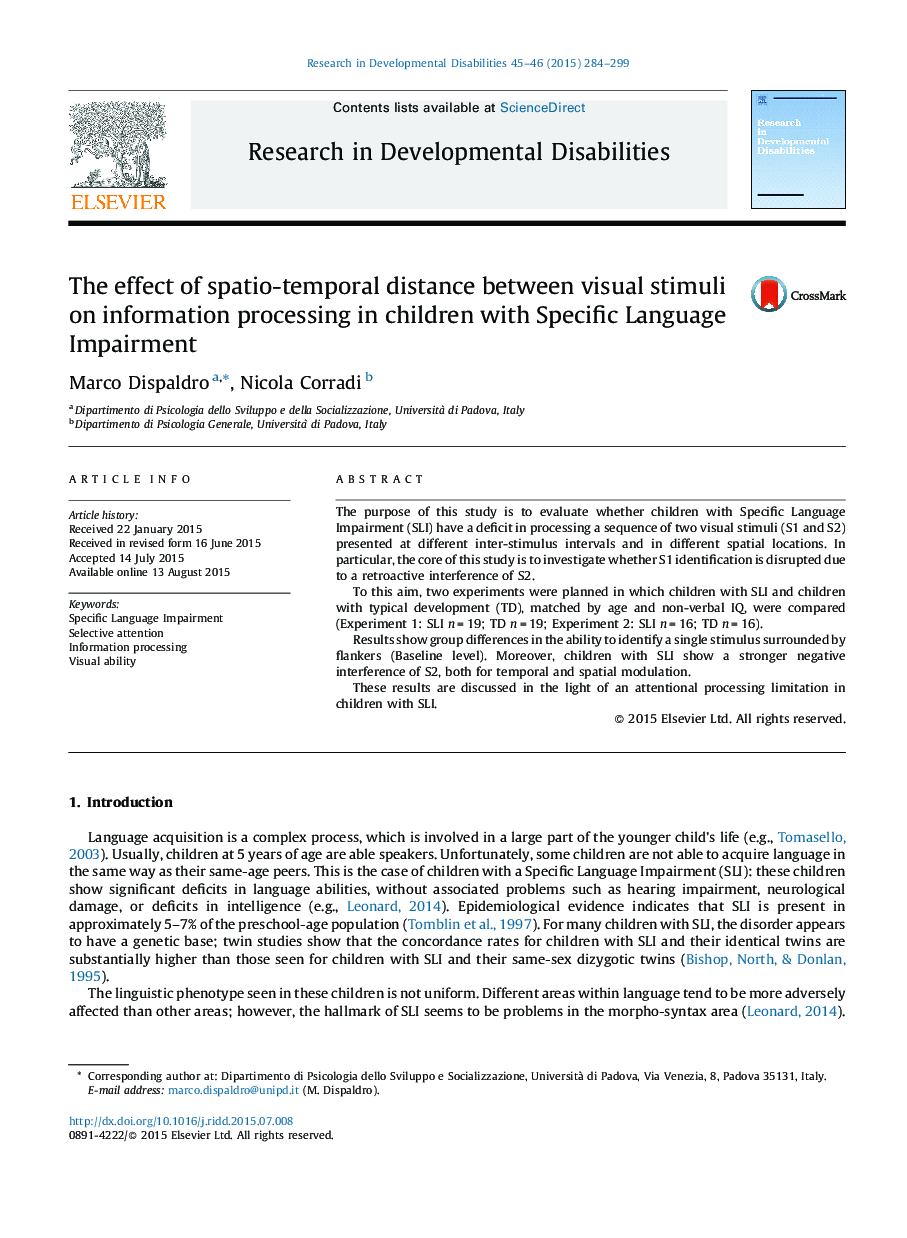| Article ID | Journal | Published Year | Pages | File Type |
|---|---|---|---|---|
| 371180 | Research in Developmental Disabilities | 2015 | 16 Pages |
•When two stimuli are presented, they compete for limited attentional resources.•A target is processed as a function of its temporal and spatial distance from a distractor.•Children with SLI are impaired in directing selective attention between stimuli.
The purpose of this study is to evaluate whether children with Specific Language Impairment (SLI) have a deficit in processing a sequence of two visual stimuli (S1 and S2) presented at different inter-stimulus intervals and in different spatial locations. In particular, the core of this study is to investigate whether S1 identification is disrupted due to a retroactive interference of S2.To this aim, two experiments were planned in which children with SLI and children with typical development (TD), matched by age and non-verbal IQ, were compared (Experiment 1: SLI n = 19; TD n = 19; Experiment 2: SLI n = 16; TD n = 16).Results show group differences in the ability to identify a single stimulus surrounded by flankers (Baseline level). Moreover, children with SLI show a stronger negative interference of S2, both for temporal and spatial modulation.These results are discussed in the light of an attentional processing limitation in children with SLI.
